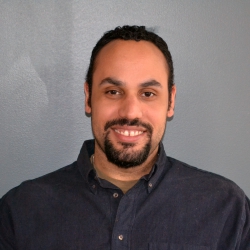Feb
12
2016

Written by Sean Thomas-Breitfeld
Race is often a hard thing to talk about, especially in increasingly multicultural nonprofit organizations where there may not be an obvious numeric majority; and it can be especially difficult to figure out what interventions to make. So I was lucky to have a conversation recently with three other nonprofit directors about how they do race equity within their organizations. As panelists, we checked off some key demographic boxes – two of us men, two women; two of us Black, one Latino, one White; two of us queer – but the theme that emerged across all of our diversity was the idea that organizational cultures can be racialized, often in ways that contrast with the actual demographic makeup of an organization’s staff.
I have already written about how feminist theory helps us avoid mistaking ‘representation for transformation.’ My colleagues built on that theme with their insights about how sticky dominant organizational cultures can be. The notion of “white dominant” organizations – even ones being led by people of color – was provocative and confusing for the audience. In response to a question by someone trying to understand what it would mean or feel like to be in an organization that was not “white dominant” the four of us fumbled to explain the qualitative difference. But then a long-time friend and colleague – also a person of color – spoke up and laid out three markers that really resonated for me:
1. Power is discussed all the time
2. White men are the ones who end up feeling ‘othered’
3. There’s more celebration of community
The first point about power connects back to our feminist roots of deeply examining “the hidden sites and processes of power and influence” that operate within social structures, political systems and nonprofit organizations. But beyond examining power, the idea is that healthy organizations have the capacity and willingness to talk critically and honestly about power dynamics in organizations. Too often, we want to pretend that our organizations are somehow utopian spaces free of power struggles and hierarchies – but that avoidance of power is about as useful as the failed experiment in colorblindness.
The uncomfortable point about white men feeling ‘othered’ seems to reflect the reality of our racially complicated and polarized world today. When the concerns and interests of people of color are brought to the center of organizational strategy and public policy (or even pop culture), it can trigger feelings of vulnerability in white men. Just mentioning “pro-diversity values” in a company’s recruitment materials has been shown to undermined the performance of white men interviewing for a job, and there are the common stories “among black managers of white employees who ceaselessly buck their authority.” Feeling ‘othered’ has been routine for people of color but now it is becoming a new problem for white men. How organizations will make space for white men to work through those feelings of discomfort is still in process.
It is hard to know what the indicators would be of an organization that really celebrates community –the third marker of an organization that is not “white dominant.” For organizations considering why and how to transform their organizational culture, it’s worth thinking of community as a process. And celebrating community is an ongoing action that provides motivation for change processes that may sometimes be difficult and uncomfortable, but still worth the effort.
